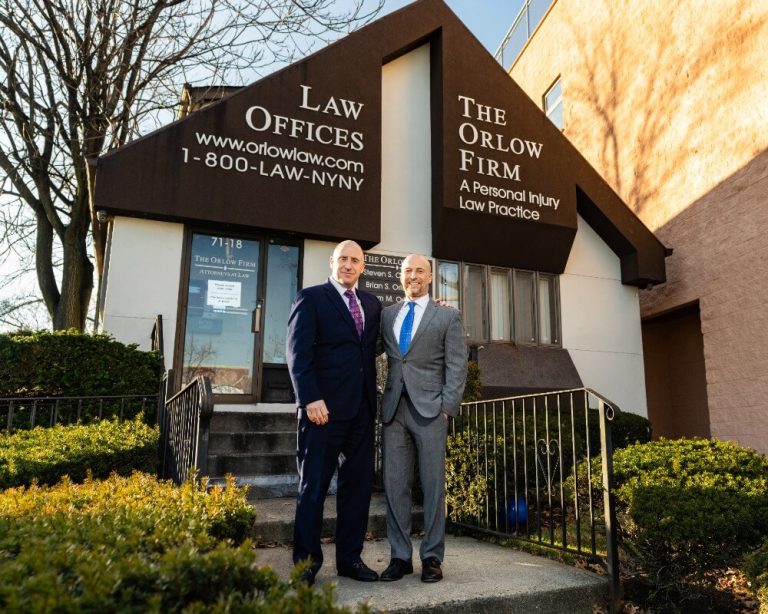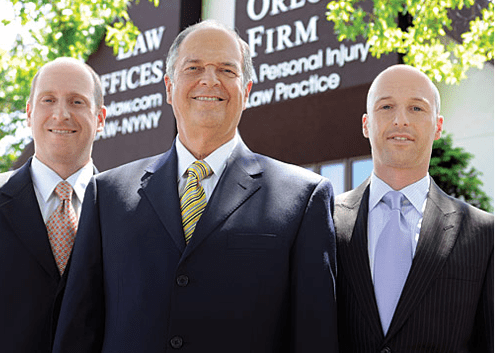How to Document An Accident Scene Thoroughly
Quick Answer: After an accident in NYC, first ensure safety and call 911 for injuries or police. Then, gather essential information like contact details, photos, and witness accounts at the scene. For immediate legal guidance or support, contact our personal injury lawyers at (646) 647-3398 for a free consultation.
Safety First: What to Do Immediately After an Accident in NYC
Your safety, and the safety of everyone involved, must always be your top priority after any accident in New York City. The moments immediately following a collision or incident can be chaotic, but taking a few critical steps right away can prevent further harm and lay the groundwork for any future personal injury claim.
Here’s what you should do first:
-
Check for Injuries and Call 911 Immediately:
- Assess yourself and everyone else involved for any injuries. Even if you feel fine, adrenaline can mask pain. Some serious injuries may not be immediately obvious.
- If anyone is hurt, or if there is significant property damage ($1,000 or more to the property of any one person), call 911 without delay. Request both medical assistance (EMS) and police to be dispatched to the scene. An official police report can be a vital piece of evidence later on.
-
Ensure Safety at the Scene:
- First, assess your immediate surroundings for any ongoing dangers.
- If you’re involved in a car accident, and it’s safe to do so, move your vehicle out of active traffic; if not, turn on your hazard lights and use flares or warning triangles if available.
- If your accident involves a slip and fall, construction incident, or other non-vehicular event, ensure you’re in a secure area away from any immediate hazards like unstable structures, ongoing work, or slippery surfaces.
-
Stay at the Scene:
- Crucially, never leave the scene of an accident (unless it’s not safe to do so) before help arrives or without exchanging information with all involved parties. Leaving the scene can have serious legal consequences, including criminal charges, and can severely jeopardize your ability to file a personal injury claim.
-
Do NOT Admit Fault or Apologize:
- In the confusion of the moment, it’s natural to want to apologize or express regret. However, even a simple “I’m sorry” can be misinterpreted as an admission of fault and used against you later by insurance companies.
- Stick strictly to the facts when speaking with police, other drivers, or witnesses. Do not speculate about what happened or assign blame.
-
Limit Discussions with Others:
- Beyond exchanging necessary contact and insurance information, avoid engaging in detailed conversations about the accident with anyone other than the police, emergency medical personnel, or your attorney. What you say can be recorded or misconstrued.
By prioritizing these immediate safety measures, you protect yourself, others, and your potential legal standing following an accident in the bustling environment of New York City. For immediate help and a free consultation, call The Orlow Firm today at (646) 647-3398.
Exchanging Information: Who to Talk To and What to Get
Once you’ve ensured everyone’s immediate safety, the next crucial step in documenting your accident in NYC is to exchange information with all involved parties. This is essential for insurance claims and any potential legal action. Acting quickly and thoroughly in a busy city environment like New York can make a big difference.
Here’s a breakdown of what to do:
Information to Exchange with Other Drivers
You’ll need to share your details and collect theirs. Aim to get the following from every driver involved:
- Full Name and Contact Information: Get their legal name, phone number, and email address.
- Driver’s License Information: Note their driver’s license number and the state it was issued in.
- License Plate Number: Write down the license plate number for their vehicle(s).
- Insurance Information: Obtain their insurance company name and policy number.
- Vehicle Information: Get the make, model, year, and color of their vehicle(s). Note any visible damage you observe.
Be sure to provide them with the same information about yourself and your vehicle.
Collecting Key Witness Information Effectively
Witnesses can provide invaluable unbiased accounts of what happened, especially if there are conflicting stories. In a fast-paced city like New York, people move quickly, so try to talk to witnesses before they leave the scene.
- Approach Witnesses Calmly and Respectfully: Thank them for stopping and explain that their account could help clarify the accident details.
- Ask for Basic Contact Details: Get their full name, phone number, and if possible, their email address. This allows your attorney or insurance company to reach them later.
- Write Down What They Saw: Ask the witness to describe what they observed in their own words. You can take notes or, if they agree, record a short audio or video clip on your phone. Focus on details like the time, direction of travel, and any specific actions they noticed.
- Note Their Location: Ask where they were when they saw the accident. Knowing their vantage point (e.g., from a nearby sidewalk, another car, or a building window) helps verify their perspective.
- Avoid Leading Questions: It’s important to let the witness speak freely. Do not try to influence their statement or suggest details. Accurate, honest details are the most helpful.
If you’re injured and unable to speak with witnesses yourself, ask a trusted friend or family member to help, or politely request a bystander to assist. Witness statements, combined with your other documentation, can significantly strengthen your personal injury claim. For immediate help and a free consultation, call The Orlow Firm today at (646) 647-3398.
The Power of Visuals: How to Take Effective Photos and Videos
In the aftermath of an accident in New York City, visual evidence can speak volumes. Photos and videos provide an objective, immediate record of the scene, damage, and conditions, which can be invaluable when filing an insurance claim or pursuing a personal injury case. Your smartphone is a powerful tool for this purpose.
Here’s why taking clear photos and videos is so important and what you should capture:
Why Visual Evidence Matters
- Captures Details While They’re Fresh: Accident scenes can change rapidly due to traffic, weather, or emergency response. Visuals provide a snapshot of what things looked like exactly when they happened.
- Shows Damage Clearly: Close-up shots of dents, broken glass, skid marks, and injuries offer undeniable proof of the extent of the impact.
- Helps Explain How the Accident Happened: Visuals of traffic signs, lights, road conditions, debris, and vehicle positions can help reconstruct the sequence of events.
- Supports Your Memory: Over time, small details can fade. Photos and videos serve as powerful reminders of what you saw and experienced.
What to Photograph or Video
Aim to get comprehensive coverage of the entire scene:
- Your Injuries: Document any visible injuries immediately, such as cuts, bruises, scrapes, or swelling. Take clear, close-up shots from various angles. Continue to photograph your healing process over time if injuries persist.
- Damage to Property or Objects: Capture damage to any property involved, whether it’s vehicles (dents, broken glass, deployed airbags), personal belongings, or structures (broken stairs, damaged machinery, construction debris). Take wide shots to show context and close-ups from multiple angles to detail the extent of the damage.
- The Accident Environment: Photograph the area where the accident occurred. This includes traffic controls (lights, signs), road conditions (potholes, ice, standing water) for vehicular accidents, or premises hazards (spills, uneven surfaces, poor lighting) for slip and falls. For construction accidents, capture the overall work site, equipment involved, safety measures (or lack thereof), and any debris. Show skid marks or scattered debris if applicable. Take wide-angle shots to show the general layout, including landmarks, buildings, or businesses nearby.
- Weather and Lighting Conditions: Document if it was raining, snowing, foggy, sunny, or dark. This can be a factor in how the accident occurred.
- Property Damage: If the accident involved damage to property beyond vehicles (e.g., fences, guardrails, lamp posts, storefronts), photograph that thoroughly as well.
Tips for Taking Strong Visual Evidence
- Use Your Smartphone: Most modern smartphones have excellent cameras perfectly capable of capturing necessary evidence.
- Get Both Wide and Close Shots: Start with wide shots to establish context, then zoom in for detailed close-ups.
- Take Many Photos: It’s better to have too many photos than not enough. Capture different angles and perspectives.
- Check for Time and Date Stamps: Ensure your phone’s settings have the time and date stamp enabled. This helps verify when the photos were taken.
- Be Safe: Always prioritize your safety. Never put yourself in harm’s way by standing in active traffic or hazardous conditions to take photos. If it’s not safe, only take pictures from a secure location.
- Look for Additional Footage: In a city like NYC, inquire about dashcam footage from other vehicles or security camera footage from nearby businesses. While you may not be able to obtain this immediately, your attorney can often help retrieve it later.
Strong visual documentation is one of the most compelling forms of evidence in a personal injury claim, helping to present a clear and undeniable picture of your accident in New York City. For immediate help and a free consultation, call The Orlow Firm today at (646) 647-3398.
Documenting Details: What to Write Down at the Scene
In the moments immediately following an accident in New York City, it can be incredibly difficult to think clearly. However, capturing specific written details as soon as possible is critical. These notes serve as your immediate memory of the event and can be invaluable evidence for your personal injury claim.
Here are the key details you should write down right away, whether in a small notebook, on your phone’s notes app, or even on a piece of paper:
- Date and Time of the Accident: Note the exact date and time. This helps correlate your account with police reports, witness statements, and any potential traffic camera footage. Even a best estimate is better than none.
- Exact Location: Be as specific as possible. Include the street names, cross streets (e.g., “Broadway and 42nd Street”), the nearest building address or significant landmark, and the direction of travel (e.g., “northbound lane”). In a dense city like NYC, precision matters.
- Conditions at the Scene: Note the immediate environment. This includes weather (raining, foggy, icy), road conditions (dry, wet, potholes) for vehicular accidents, or premises conditions (spills, poor lighting, uneven surfaces, construction debris, broken steps) for slip and fall or construction incidents. These details are crucial for understanding causation.
- Involved Property or Objects: For motor vehicle accidents, include the make, model, color, and license plate numbers of all vehicles, noting visible damage. For other accidents, describe any property or objects involved in the incident, such as damaged flooring, broken equipment, or hazardous materials.
- Parties Involved and Witnesses: Collect names, contact information, insurance details (if applicable), and driver’s license numbers of all drivers. Also include any passengers, property owners/managers, contractors/employers, or other individuals directly involved. Don’t forget any witnesses you spoke with.
- Your Injuries: Even if they seem minor at the time, describe how you feel immediately after the accident. Note any pain, discomfort, or changes in your physical state. Be specific: “burning pain in left shoulder,” “headache started 10 minutes later,” or “difficulty moving right arm.” These small details can be crucial for your medical records and claim.
- Your Account of What Happened: Briefly write down a factual description of how the accident occurred, in your own words. Stick to objective facts. Avoid making assumptions, assigning blame, or speculating on others’ actions. For example, “I was stopped at the red light when the other vehicle struck my rear bumper.”
Taking these notes early ensures that important information isn’t forgotten due to stress, injury, or the passage of time. This diligence will significantly help in building a strong, accurate record for your personal injury case. For immediate help and a free consultation, call The Orlow Firm today at (646) 647-3398.
Official Reports After a Car Accident: The Police Report & NYC DMV MV-104
For motor vehicle accidents in New York City, beyond your personal notes and collected evidence, official reports are critical. These documents provide an unbiased, authoritative account of the incident, which is invaluable when dealing with insurance companies or pursuing a personal injury lawsuit.
The Police Report: Your Official Record
Calling the police after an accident in NYC, even a seemingly minor one, is always a smart move.
- Why It’s Important: A police report serves as an official record of the accident. It typically includes key details like the date, time, location, parties involved, a narrative of what happened (often based on witness statements and officer observations), and sometimes even fault determination.
- Evidence and Credibility: This report can be crucial evidence, lending credibility to your account and helping to resolve disputes with insurance companies. It also ensures there’s an official record if you need to pursue legal action later.
- How to Get It: Ensure the police are called to the scene. Get the responding officer’s name, badge number, and the report number if available. You’ll generally be able to obtain a copy of the official police accident report (often form MV-104A) a few days after the incident.
The NY DMV MV-104: A Crucial Filing Requirement
In New York State, there’s a specific legal requirement for drivers involved in certain accidents to file a report with the Department of Motor Vehicles (DMV). This is separate from the police report, though the police might also file an MV-104A.
- When It’s Required: You must file an MV-104 (Report of Motor Vehicle Accident) with the New York State DMV within 10 days of an accident if:
- Anyone was injured or killed.
- Property damage (to any one person’s property, including your own vehicle) exceeds $1,000.
- The Importance of Filing: Failure to file this report within the 10-day deadline can lead to the suspension of your driver’s license.
- What It Contains: The MV-104 form requires specific details about the accident, including driver and vehicle information, insurance details, and a diagram of the incident.
- Assistance from Your Attorney: While you are responsible for filing this form, navigating the requirements can be confusing, especially if you’re injured. The Orlow Firm can assist you in understanding and properly submitting your MV-104 report to ensure you meet all legal obligations.
Securing both the police report and ensuring the proper filing of the NY DMV MV-104 form are foundational steps in thoroughly documenting your accident and protecting your rights in New York City. For immediate help and a free consultation, call The Orlow Firm today at (646) 647-3398.
Your Health is Key: Why Medical Records Are Crucial
After an accident in New York City, your physical recovery is your absolute top priority. But it’s also vital to understand that your medical records are not just for your health; they are the backbone of your personal injury claim. These documents provide concrete evidence of your injuries, the treatment you’ve received, and how the accident has impacted your life.
Here’s why diligent medical documentation is so important:
- Establishing Causation: To receive compensation, you must prove that your injuries were directly caused by the accident. Medical records from soon after the incident create a clear link between the event and your physical harm. Waiting too long to seek medical attention can make it harder to prove this connection.
- Proving Injury Severity: Medical records are essential for demonstrating the full extent and severity of your injuries, regardless of the accident type. For car accidents in New York, specifically, these records are crucial for proving you meet the “serious injury” threshold necessary to pursue a claim beyond no-fault benefits (e.g., broken bones, significant disfigurement, or permanent limitation of a body function). For all other accidents, clear medical documentation helps establish the impact on your life.
- Creating a Recovery Timeline: Ongoing medical care, such as physical therapy, specialist consultations, or surgeries, paints a picture of your recovery journey. This timeline helps illustrate the pain, suffering, and disruption the accident has caused in your life.
- Supporting Financial Claims: If your injuries prevent you from working, or require long-term care, your doctors’ reports are critical. They provide the necessary evidence to support claims for lost wages, reduced earning capacity, and future medical expenses.
Steps to Protect Your Claim Through Medical Records
- Get Medical Attention Immediately: Even if you feel okay after an accident, some injuries (like whiplash or internal trauma) may not manifest for hours or even days. Seeking medical care right away creates an official record from day one, linking your condition to the accident.
- Follow All Medical Advice and Follow-Up Care: Consistently attend all scheduled appointments, follow your doctor’s treatment plans, and complete any prescribed therapies. Missed appointments or a lack of follow-through can be used by insurance companies to argue that your injuries aren’t as serious as you claim.
- Keep Copies of Everything: Maintain a detailed record of all medical documents: emergency room reports, hospital discharge papers, doctors’ notes, prescription receipts, therapy logs, and bills. This meticulous record-keeping will be invaluable.
- Clearly Explain How the Injury Happened: When speaking with medical professionals, be explicit about how your injuries occurred. State clearly that they resulted from the accident. This detail will be noted in your medical chart and further supports your claim.
In New York City, thoroughly documented medical records are vital for any personal injury claim. For car accidents, it’s important to understand the state’s no-fault insurance rule where your own insurance generally covers initial medical bills; however, if your injuries meet the “serious injury” standard, you may be able to pursue additional compensation. For all other accident types, robust medical documentation directly supports your claim for damages stemming from the injury. Protecting your claim starts with meticulous record-keeping. For immediate help and a free consultation, call The Orlow Firm today at (646) 647-3398.
Navigating Insurance: Your Responsibilities and Deadlines in NYC
Navigating insurance claims after an accident in New York City can be complex, regardless of the accident type. Understanding your specific responsibilities and adhering to strict deadlines is crucial to protect your right to compensation.
Insurance for Different Accident Types:
-
For Car Accidents:
- No-Fault Claim Deadline: In New York’s No-Fault insurance system, you generally have 30 days from the date of the accident to file a no-fault application with your own insurance company for medical expenses and lost wages, regardless of who was at fault. File this immediately.
- Other Policy Deadlines: Be aware of other policy-specific deadlines, such as those for Uninsured/Underinsured Motorist (UM/UIM) claims, which often require notification within 90 days.
-
For Slip and Fall or Premises Liability Accidents:
- Promptly notify the property owner, business, or their management company about the accident. They may have specific incident reporting procedures.
- Their commercial general liability (CGL) insurance or property insurance is typically involved. An attorney can help you identify and properly notify the responsible insurer.
-
For Construction or Workplace Accidents:
- Workers’ Compensation: If you were injured on the job, you must generally notify your employer of your injury within 30 days in New York to file a Workers’ Compensation claim.
- Third-Party Liability: Beyond Workers’ Comp, other parties (e.g., contractors, equipment manufacturers) might be liable. Their general liability insurance will be involved, and your attorney can help identify and notify them.
Regardless of the accident type, always check your specific insurance policies, as deadlines and requirements can vary. Early notification is almost always beneficial.
What to Say (and Not to Say) to Insurance Companies
- Be Factual with Your Own Insurer: When reporting to your own insurance company for a no-fault claim, provide them with factual details about the accident, including when, where, and how it happened.
- Be Cautious with the Other Driver’s Insurer: You are generally not required to give a recorded statement to the other driver’s insurance company. Their primary goal is to minimize their payout. Any statement you provide could potentially be used against you later to devalue or deny your claim. It’s highly advisable to consult with a personal injury attorney before speaking with the at-fault driver’s insurance company.
- Do Not Speculate or Admit Fault: Never admit fault or speculate on what caused the accident when speaking with any insurance representative. Stick to the objective facts.
Understanding these reporting requirements and communication guidelines can make a significant difference in how your accident claim progresses. For immediate help and a free consultation, call The Orlow Firm today at (646) 647-3398.
Frequently Asked Questions About Documenting Accidents in New York
Accidents can be overwhelming, especially in a busy place like New York City. Knowing how to properly document the scene can make a significant difference if you need to file a personal injury claim later. Below are some common questions to help you better understand the documentation process after an accident in New York.
- Do I need to call the police after an accident? Yes. In New York, it’s crucial to get an official police report, especially if anyone is hurt or there’s significant property damage. This report serves as vital evidence when dealing with insurance companies or legal claims.
- What types of photos and videos should I take at the scene? Take clear pictures and videos of everything: your injuries, any damaged property or objects involved (vehicles, equipment, personal belongings), the direct cause of the accident (e.g., a hazard, broken equipment, vehicle positions), and the overall scene from wide and close-up perspectives. Capture relevant conditions like weather, lighting, road conditions, or premises hazards (e.g., spills, uneven surfaces).
- Should I talk to witnesses? Absolutely. If anyone saw the accident, politely ask for their full name and contact information. Try to get a brief statement about what they saw, but let them speak in their own words. Witness accounts can be incredibly helpful in proving what happened.
- What details should I write down while at the scene? Record the exact date, time, and specific location. Note relevant conditions (weather, road conditions for vehicles; premises hazards for slip and falls). Document information about all parties involved (names, contact info, insurance) and any property or objects involved (e.g., vehicle details, hazardous equipment). Critically, write down your injuries and a factual account of how the accident occurred.
- What if I’m too injured to take notes or photos? Your safety and health come first. Seek medical attention immediately. If possible, ask a trusted friend, family member, or even a helpful bystander to gather information and take photos on your behalf using your phone.
- How soon should I see a doctor after the accident? It’s best to seek medical care as soon as possible, ideally on the same day. Some serious injuries might not be immediately apparent. Prompt medical records are essential to link your injuries directly to the accident and to prove their severity.
- Do I need to tell my insurance company right away? Yes. For car accidents, New York’s no-fault system typically requires you to file a claim with your own insurer within 30 days. For other accident types (e.g., slip and fall, construction), it’s important to notify the responsible property owner’s or employer’s insurer promptly. Early reporting is generally crucial for all claims.
- Do I need to file a report with the NY DMV? For car accidents, yes. If an accident involves injury, death, or property damage exceeding $1,000 to any one person, you are legally required to file an MV-104 (Report of Motor Vehicle Accident) with the New York State DMV within 10 days. Failure to do so can lead to license suspension.
- Can documenting the scene help if I file a legal claim later? Absolutely. The more comprehensive and organized your documentation is – including photos, notes, witness info, police reports, and medical records – the stronger your personal injury claim will be. It helps clearly demonstrate what happened and who may be at fault.
- Should I contact a lawyer right after documenting the scene? Yes, it’s highly recommended. An experienced personal injury lawyer in NYC can review your documentation, ensure you’ve met all legal deadlines (like the MV-104), help you navigate insurance companies, and advise you on meeting New York’s “serious injury” threshold, protecting your rights from the very beginning.
For immediate help and a free consultation, call The Orlow Firm today at (646) 647-3398.
The Orlow Firm: Your Partner in Protecting Your Rights After an NYC Accident
After an accident in New York City, the moments, days, and weeks that follow can be incredibly confusing and stressful. Even when you’ve diligently followed all the essential steps—from documenting the scene with photos and videos to gathering witness information and seeking immediate medical care—the legal and insurance processes can present unexpected challenges. That’s precisely where having the right legal team by your side becomes invaluable.
The Orlow Firm has a proven track record of helping accident victims throughout NYC understand their legal rights and take the necessary steps to pursue rightful compensation for their injuries. We understand that every accident is unique, and so is every case. Our dedicated legal team focuses on providing you with the personal support, clear guidance, and robust representation you need during a difficult time.
While your main concern after an accident should be healing and recovery, it’s equally important to ensure your evidence is organized, your rights are protected, and all legal deadlines are met. Our experienced attorneys can help you by:
- Reviewing Your Documentation: We’ll meticulously examine all the evidence you’ve gathered—including photos, videos, witness names, contact information, and initial notes—to ensure you have a strong foundation for your claim, regardless of the accident type.
- Navigating Insurance Claims: We’ll help you properly and timely file various insurance claims, whether it’s navigating New York’s no-fault system for car accidents, or addressing premises liability or workers’ compensation claims for other incident types. We’ll also handle communications with insurance companies on your behalf, protecting you from common mistakes that could harm your case.
- Evaluating Your Claim’s Strength: We will assess your injuries to determine if they meet the “serious injury” threshold under New York law for car accident claims, and evaluate the full extent and impact of your injuries for all accident types to maximize your potential compensation.
- Securing and Organizing Medical Records: We work closely with your healthcare providers to obtain comprehensive and clear medical records, which are paramount in proving the extent and impact of your injuries for any personal injury claim.
- Managing Legal Deadlines: We ensure all crucial legal documents are filed correctly and on time, from the NY DMV MV-104 report for car accidents to complying with statutes of limitations and notice periods for workers’ compensation or premises liability claims.
- Speaking with Insurance Companies: We’ll handle communications with insurance companies on your behalf, protecting you from common mistakes that could harm your case.
- Representing You Aggressively: Whether through negotiations with insurance companies or litigation in court, we will fight tirelessly to secure the maximum compensation you deserve for medical bills, lost wages, pain and suffering, and other damages.
If you or a loved one has been injured in an accident in New York City, do not attempt to navigate the complex legal landscape alone. A small oversight in documentation or a missed deadline could significantly affect your ability to recover the compensation you need and deserve.
Contact The Orlow Firm today at (646) 647-3398 for a free, no-obligation consultation. We’ll listen to your story, review the facts of your accident, explain your legal options, and answer all your questions – at no cost to you. There’s no pressure to commit; our goal is to empower you with the information you need to make informed choices about your next steps.
Accidents may happen suddenly, but your response doesn’t have to be rushed or uncertain. With the right legal guidance, you can focus on your recovery while we protect your rights. Contact us today to get started.










